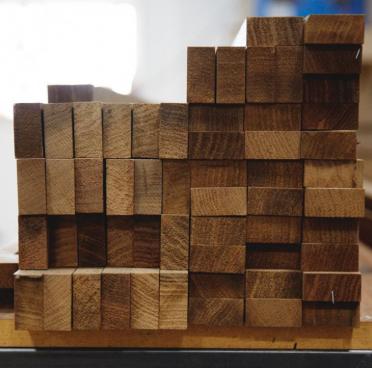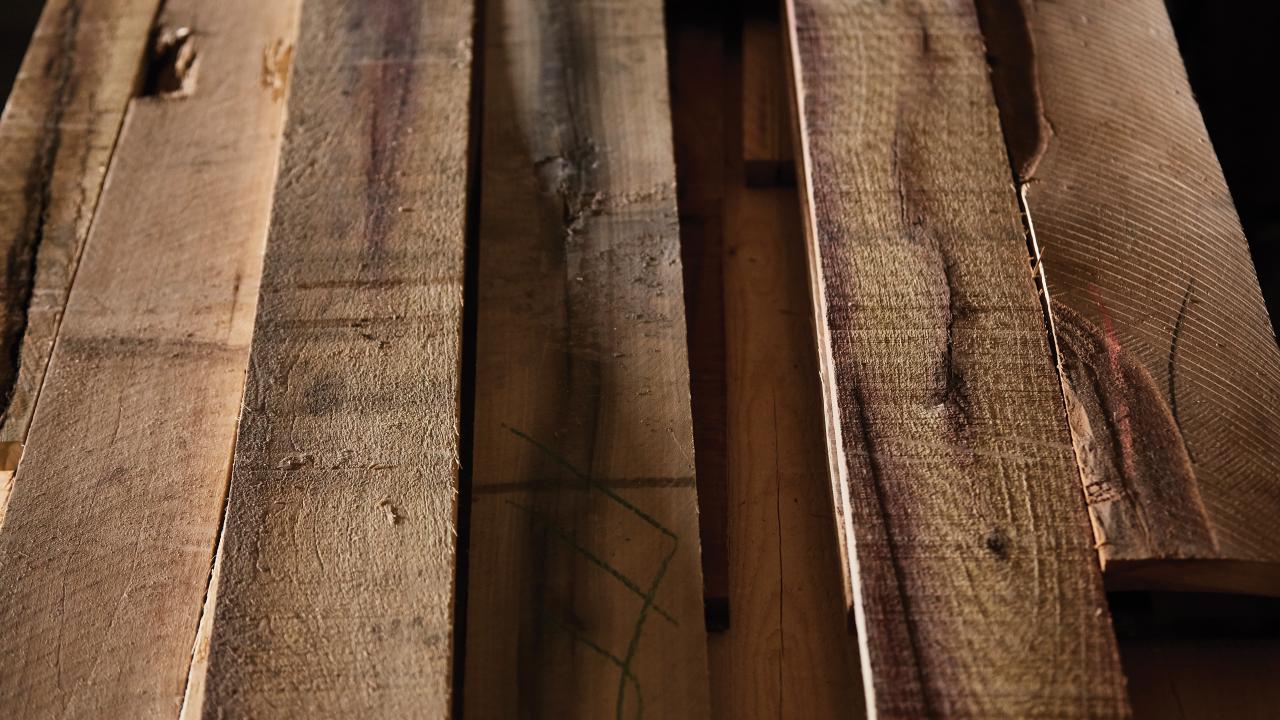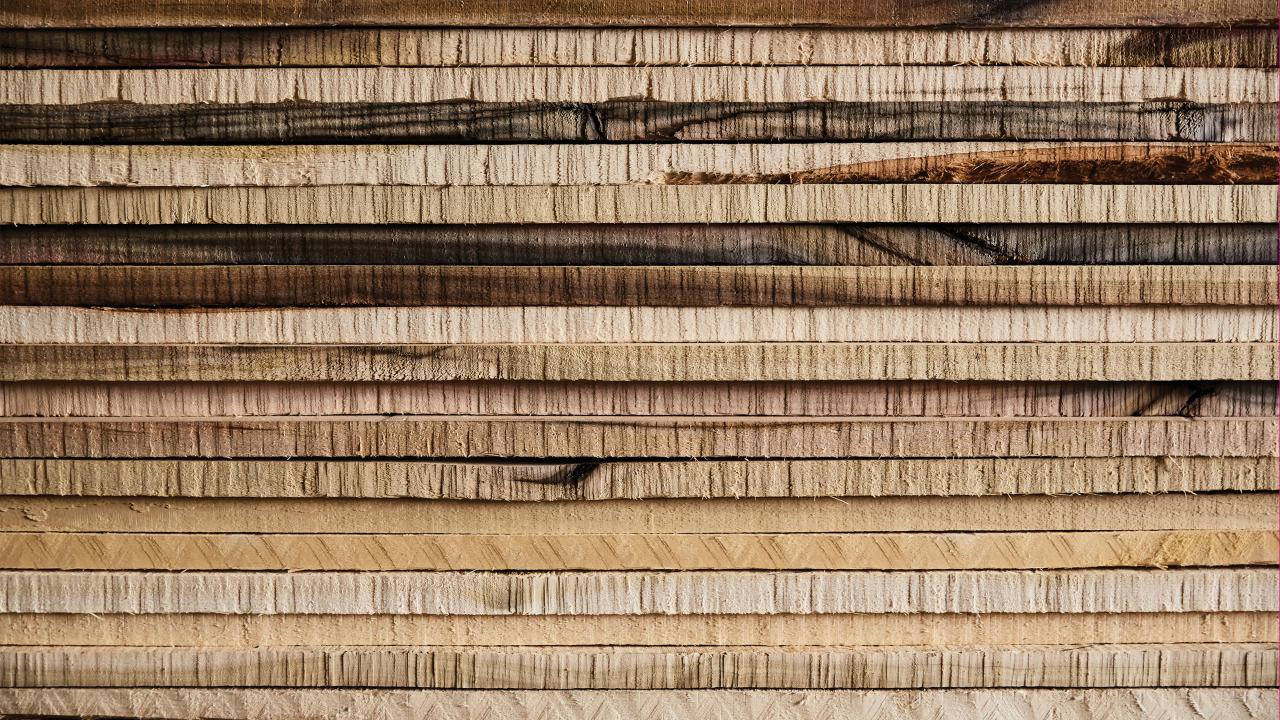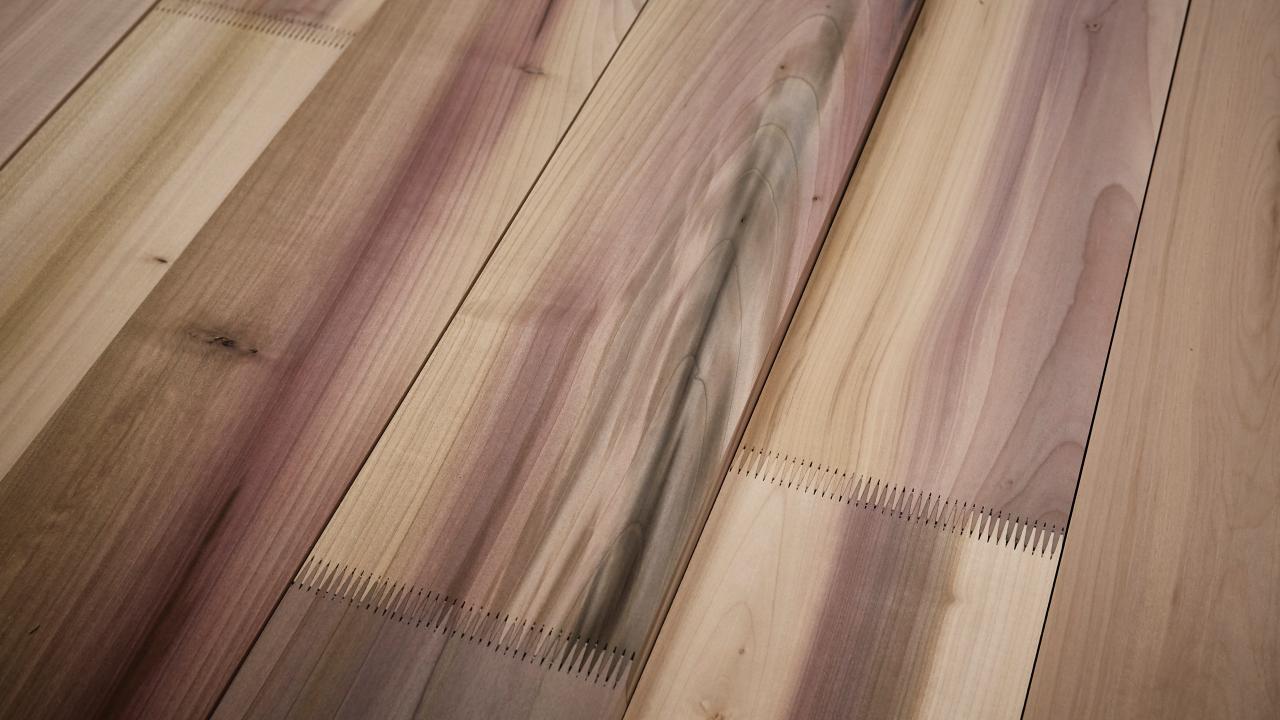CROSS LAMINATED TULIPWOOD
Cross-laminated timber (CLT) is an engineered timber that can be used to build walls and floors making up the structure of entire buildings. It has a layered construction with the wooden planks turned at right angles in each successive layer, creating a panel with equal strength in both directions, similar to plywood. Weight for weight, CLT is stronger than steel and concrete and can be machined to incredibly high tolerances. This makes it ideal for prefabrication and rapid assembly, reducing construction times by around 30%.
CLT is usually made of a softwood trees. Together with Arup, AHEC has started a process of experimenting with CLT made from fast-grown North American tulipwood. The planks will be imported from the USA but the panels themselves will be manufactured in the UK’s own fledging CLT factory in Scotland. Testing has shown that the tulipwood is considerably stronger than spruce; it also has a superior appearance.

AMERICAN TULIPWOOD
American tulipwood is one of the most prolific hardwood species from the U.S. hardwood forests and is unique to North America. Tulipwood trees grow exclusively in North America and are widely distributed throughout most of the eastern United States in mixed hardwood forests. It is a single species and is not a poplar (Populus) being a Magnoliacae producing wood that is superior to the many poplar species. The trees are huge and identified by their tulip-like flowers giving rise to the name. FIA data shows U.S. tulipwood growing stock is 1.02 billion m3, 7.7% of total U.S. hardwood growing stock. American tulipwood is growing 32.5 million m3 per year while the harvest is 12.8 million m3 per year. The net volume (after harvest) is increasing 19.7 million m3 each year. U.S. tulipwood growth exceeds harvest in all states.
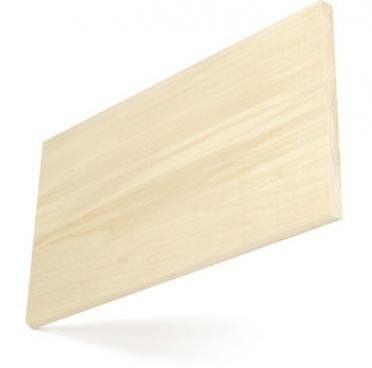
THERMALLY MODIFIED TIMBER (TMT)
Thermally modified timber is wood that has been heated in a controlled setting to 180oC. This baking process effectively crystallises the wood’s cambium which in turn provides enhanced stability and durability and reduces shrinking and swelling over time. The process changes the appearance of the wood, giving it deeper brown tones throughout. Thermo treating significantly increases timber’s water resistance and is already proven in hardwood cladding. But this the first time it has been incorporated as a protective layer in cross-laminated timber.
